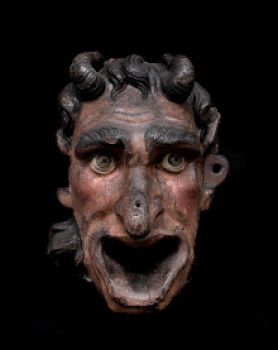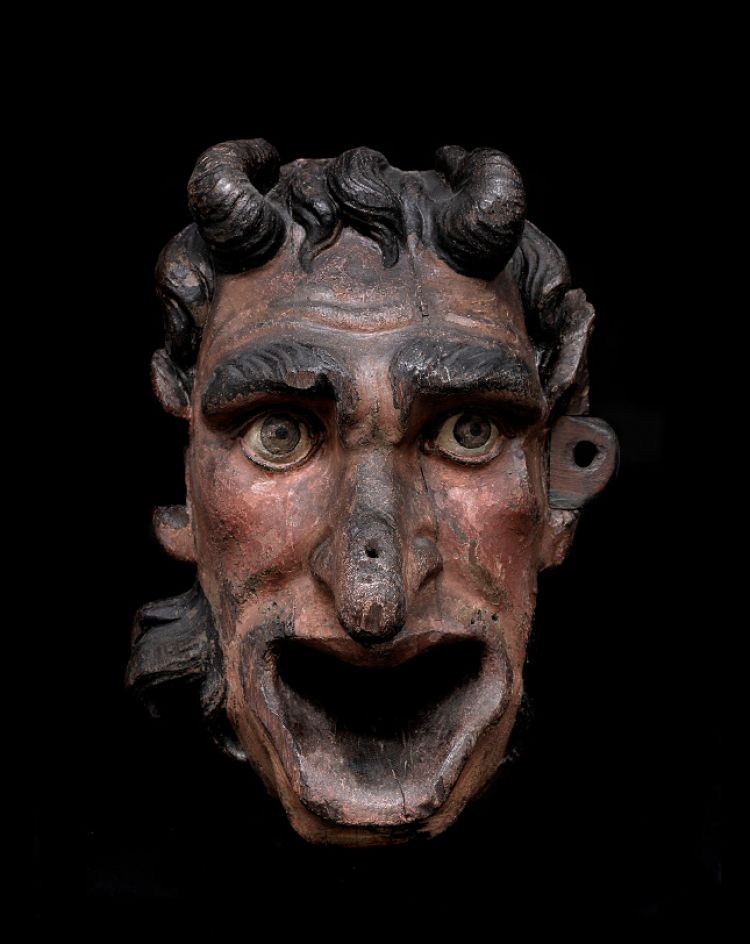Flour-mill "disgorger" (Kléiekotzer)

These wooden masks, often brightened with lively colours, were fixed to the bottoms of artisan flour mills. A duct system, activated by turning the mill, sifted the ground cereal through a cloth filter. Flour and bran were thus separated, the one going into the Mahlkìscht or flour box, the other being used as fodder for cattle. The "disgorger" or Kléiekotzer, literally "bran vomiter", pours the bran through its gaping mouth and keeps the precious flour behind.
These masks are thus guardians of the harvest, their fearsome appearance driving away evil spirits, either by means of their own image or whatever it was that frightened Alsatian peasants of the time. This is why these "disgorgers" are given the appearance of aliens, monsters of ancient mythology, soldiers or, in this case, the devil.
In fact they represented a protective measure, a response to the contamination of a subsistence food, bread, by a parasitic fungus known as ergot (Mueterkornpìlz). Ergotism poisoning, inducing among other symptoms hallucinations and gangrene, was known as "Saint Anthony's fire" or the "burning disease".
